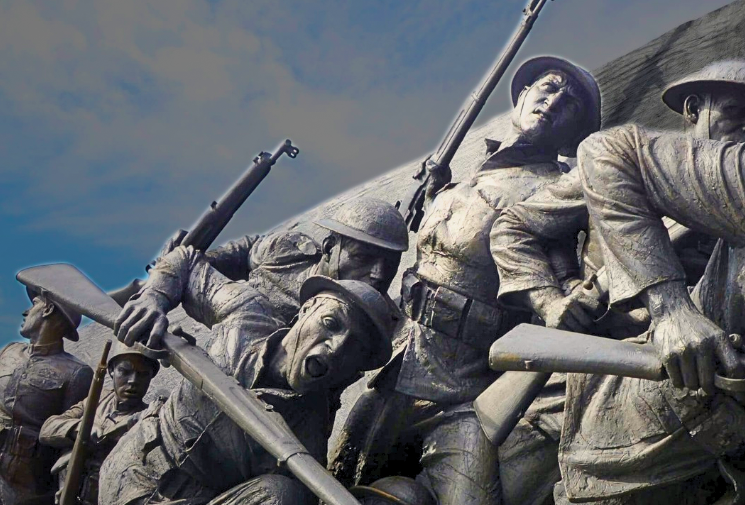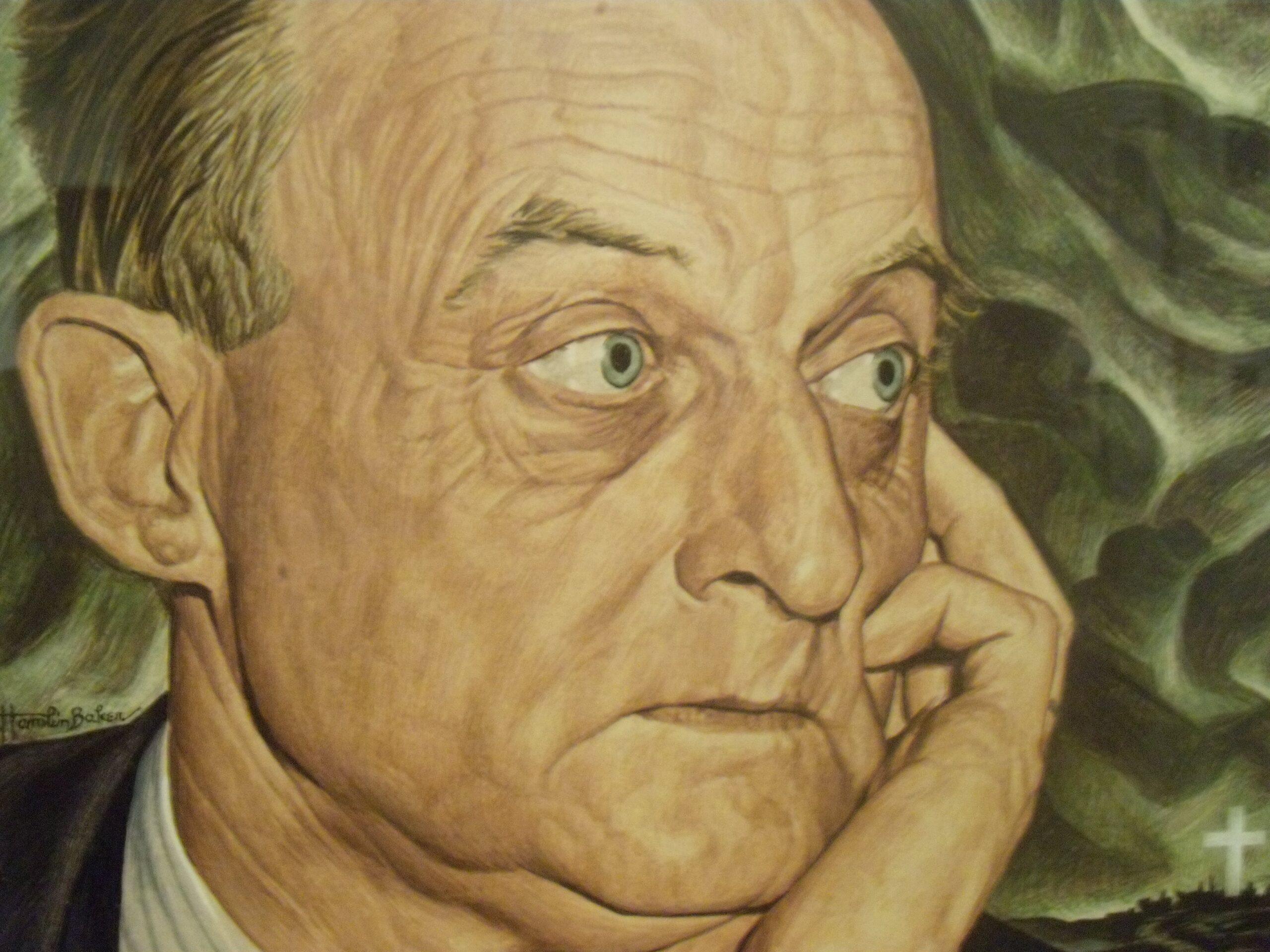Reagan Rising: The Decisive Years, 1976–1980
By Craig Shirley
(Broadside Books, 2017)
The Working Class Republican: Ronald Reagan
and the Return of Blue-Collar Conservatism
By Henry Olsen
(Broadside Books, 2017)
Of all the questions that divide conservatives in 2018, the most basic might be this: Are we living in wilderness years under a Republican president who is clearly not one of us and will give way in due time to a Democratic successor whose inadequacies will be even plainer? Or is it morning in America again?
Many elite conservatives regard the presidency of Donald Trump with the same horror and disdain that characterized their assessment of the Obama administration. A subset of them clearly believe that Trump is even worse, a threat to the very institutions conservatives are supposed to conserve in the first place.
Few conservative activists and rank-and-file Republicans agree, however. Most of them like Trump at least as much as they did George W. Bush, according to public opinion surveys. An NBC News /Wall Street Journal poll taken last year found that more Republicans held a positive view of the president (78 percent) than of their own party (61 percent). A slice of these voters sees the beginning of an American resurgence, a recovery of our economy and national spirit, in Trump’s supposed willingness to “burn it all down.”
Two new books speak to conservatives in each camp, using the career of Ronald Reagan as a lens for understanding the present condition. Craig Shirley’s Reagan Rising: The Decisive Years, 1976–1980 covers a period when conservatives believed they were lost. Henry Olsen’s The Working Class Republican: Ronald Reagan and the Return of Blue-Collar Conservatism culminates when conservatives were found. Shirley’s book is a largely nonpolemical look at history relevant to the Trump era, whereas Olsen’s is more prescriptive, making its conclusions more open to interpretation and debate.
Shirley, a longtime Republican operative who has made a second career as an author, has emerged as a top Reagan biographer. Having written about other important periods of the fortieth president’s political career, he now turns to a critical juncture when the future of that career appeared very much in doubt: the time between Reagan’s loss to Gerald Ford at the 1976 Republican National Convention and his triumphant return four years later. Reagan was in those years a far more controversial figure within Republican circles than he would ever be again. He had come in second in a nominating contest to an unelected president who would soon be found wanting by the general electorate. Reagan was also no longer governor of California. His power base was little more than the conservative movement, an entity whose biggest previous achievement had been helping Barry Goldwater secure the GOP nomination in 1964—and winding up on the wrong end of one of the worst presidential landslides in history.
The Republican Party as a whole wasn’t in much better shape as Nixon’s New Majority disintegrated in the mid-1970s. “Unable to expand into the South, and with the hangover of Watergate, the Republicans in 1976 were facing the prospect of political extermination,” Shirley asserts. While the GOP has its divisions today, it was a much less ideologically homogeneous party at that time, with a spectrum that stretched from Reaganite conservatives to bona fide liberals. “What was particularly distressing for conservatives at the time,” Shirley writes, “was a Gallup poll showing that though Republicans were about as popular as ‘ring around the collar,’ an apparent calamity for men everywhere if Madison Avenue was to be believed, almost 50 percent of Americans called themselves ‘conservative’ while less than a quarter called themselves ‘liberal.’ ”
Shirley quotes the Wall Street Journal saying at the time that “the WASP small businessman of the GOP has not found a way to make common cause with the Catholic blue-collar worker despite the latter’s increasingly conservative political perceptions.” This rendered Ford incapable of exploiting the inherent contradictions in Jimmy Carter’s political coalition, which included southerners and northern “ethnics” who were both increasingly out of step with the liberal Democratic Party mainstream. Republican strategists could see the future, but they didn’t know how to get there.
Reagan eventually cracked the code, winning two terms in the White House and reshaping American politics. Thus Olsen’s book picks up where Shirley in Reagan Rising leaves off. But a core part of Olsen’s thesis cuts against the conventional wisdom about Reagan. Olsen, a senior fellow with the Ethics and Public Policy Center, argues that Reagan was not a pure Goldwater anti-statist and emphasizes instead his continuity with New Deal liberalism. Challenging myths cherished by the left as well as the right, he contends that Reagan would never have had the appeal to blue-collar voters responsible for the GOP’s electoral breakthroughs in the 1980s if he had been an advocate of minimal government.
The Working Class Republican starts at the beginning of Reagan’s political life, well before he was ever a candidate for public office. “The press is dying to paint me as now trying to undo the New Deal,” Reagan wrote in his diary in 1982. “I remind them I voted for FDR. Four times. I’m trying to undo the ‘Great Society.’ It was LBJ’s war on poverty that led to our present mess.” Olsen thus presents Reagan’s political transformation from a liberal Democrat into a conservative Republican as less dramatic than it first appears. Reagan’s early political speeches, he writes, “would always include sentences that made clear his [anti-government] arguments did not extend to programs that sought to alleviate poverty, give people economic security or provide educational opportunity.” Rather than trying to return to the world of Calvin Coolidge, Olsen continues, Reagan “was not attacking the principal achievements of the New Deal; he was attacking only the sort of excesses that characterized the state-centric interpretation of the New Deal made by followers of Henry Wallace.”
Many Republicans still claim Franklin D. Roosevelt, Harry Truman, and John F. Kennedy as political ancestors, arguing that today’s Democrats are so radical that yesterday’s liberals look conservative. Yet this continuity thesis isn’t the standard account of how Reagan brought a libertarian-traditionalist synthesis to power in Washington. For that we have to return to Shirley’s book. Both social and economic conservatives, Shirley argues, “shared a minimalist government philosophy. Big government, with its regulations and taxes, was a threat to the business classes, but also to the family, because of the menace it posed to the home, community, and religion.” On this view, the Reagan revolution really did seek to turn back the clock.
In Olsen’s telling, by contrast, the “minimalist government philosophy” that Shirley emphasizes was part of the reason for Republicans’ struggles in the 1960s and 1970s. Only Reagan was able to pass a test that Goldwater conservatives and Ford moderates alike failed. With Reagan, working-class white voters were able to answer in the affirmative the question “Does he care about people like me?” Both principled fusionism and old-fashioned fiscal conservatism failed to win elections because voters believed in the promises of the New Deal. What they wanted was a president and a party who would conserve those promises in the face of new threats.
George W. Bush did not pass this test, in Olsen’s view. “Compassionate conservatism ultimately failed as a political strategy because it broke faith with antigovernment conservatives and offered nothing to the working-class whites whose votes determined the outcome in midwestern states,” he writes. “Its embrace of some expansion of government and lack of interest in budget cutting made many libertarian-conservatives and old-line Goldwaterites angry” while not delivering to working-class voters “a government that was limited in its aspirations but aggressive in putting itself on the side of the average working person.”
Bush was willing to increase spending, but the beneficiaries of his largesse tended to be Democratic voting blocs and in some cases included the nonworking poor. On core New Deal programs cherished by Olsen’s blue-collar conservatives, Bush was actually willing to take risks, proposing a partial privatization of Social Security in 2005. One area where Bush did expand a social welfare program to aid a Republican voting bloc was the 2003 Medicare prescription drug benefit. But even here he would not go as far as the Democrats (and subsequently Trump) in trying to control drug prices.
Which brings us back to today’s divide over Trump. If you are an anti-Trump conservative, you might read Shirley’s book, see Trump as a Ford Republican, and patiently hope for Ted Cruz or Marco Rubio to play the part of a second Reagan and make his comeback, perhaps against a liberal Democrat in the White House after Trump. If you are a pro-Trump conservative, however, you might read Olsen and see the president as a Reagan Republican who convinced ordinary people he was on their side, pointing toward an enduring alignment of the GOP with the working class.
There is some evidence for the latter view. After all, Trump won whites without college degrees by thirty-seven points and men in this category by an eye-popping forty-eight points. He exceeded three hundred electoral votes, a feat never managed by the younger Bush, by flipping Ohio and Florida from 2012 and winning several industrial states that hadn’t gone Republican since Reagan was president: Pennsylvania, Michigan, and Wisconsin. Trump also ran as a supporter of Social Security and Medicare, an opponent to cuts in entitlement spending that benefited people who work, and a champion of trade and immigration restrictions designed in part to protect working-class jobs and incomes. George W. Bush and the two losing Republican presidential candidates who followed him in 2008 and 2012 disagreed with Trump on these issues. Rather than targeting the kinds of people who supported Reagan, they aimed their compassionate conservatism at minority and highly educated voters who usually vote for Democrats.
Olsen acknowledges that “the core thrust of [Trump’s] argument regarding government’s ultimate purpose bears poignant similarities to Reagan’s New Deal conservatism,” even if he doesn’t like the current president very much. “Ronald Reagan was remarkably free of bigotry,” Olsen writes. “He was raised by his parents to look beyond color or creed at a person’s worth. . . . Reagan loved Americans from all racial, ethnic, and economic backgrounds.” Olsen contrasts this lack of bigotry and Reagan’s sympathy for immigrants with Trump’s “not-so-veiled racialism and white nationalism.” Whatever merit there is in this argument, it should be remembered that Reagan was a product of a homogeneous old Midwest, while Trump is a creature of a divided, heterogeneous New York City. Prior to his forays into politics, Trump also had a larger nonwhite fan base than Reagan ever did.
In some ways, Trump is a better fit for Olsen’s thesis than Reagan was. Reagan may not have attacked government programs that benefited his key voting blocs. The crux of his argument, however, was rolling back liberal misgovernment by cutting taxes and marginal tax rates, curbing social welfare programs, and pursuing deregulation and a modest reassertion of federalism, mixed with cultural conservatism. Overall, the Reagan administration sought to realign federal priorities away from what liberals believed government should do toward what conservatives thought its proper role to be: more emphasis on national defense and law and order, less on income redistribution and the welfare state.
When Reagan did agree to an expansion of the welfare state, the Medicare catastrophic care program, the result was such a disaster for its intended beneficiaries that it was soon repealed on a bipartisan basis. Conservatives should be so lucky with Obamacare. And even though spending and debt increased during Reagan’s presidency, he also professed a commitment to limited, if not minimal, government.
Government-cutting, even in a modest form, was less important to Trump’s appeal. It tends not even to be what Trump talks about when he urges voters to pull the lever for Republican candidates. Instead he mentions the need for strong borders, toughness on crime, better care for veterans, and job creation. Only the last item is associated with policies that involve less government.
Since his election, Trump has been solid from a conventional conservative perspective on tax cuts and deregulation. But his administration’s difficulties with repealing Obamacare, despite unified Republican control of the federal government, illustrate the challenges of creating constituencies for conservative reforms to healthcare and entitlement programs. Getting from the New Deal to House Speaker Paul Ryan’s free-market vision looks as hard as ever.
The experience of recent decades shows that Republicans can thrive politically by being less than comprehensive in their rejection of “big government.” But every major GOP electoral success from Reagan to the Tea Party has been a response to liberal misgovernment rather than an endorsement of a positive agenda. Maybe a Bernie Sanders-ized Democratic Party will revive the conditions that helped elect Reagan in the 1980s, and maybe it won’t. Since Reagan, though, we have largely combined Republican tax rates with Democratic spending programs and both parties’ wars. Mathematically and economically, the feasibility of this is coming to an end.
Shirley ends his book on a note consistent with Olsen’s. Reagan’s “worldview in 1964 was not his worldview in 1980,” Shirley writes. “His conservatism had changed, from being simply against the intrusion of big government to the more positive advance of individual freedom.” Whether Trump is more like Ford or Reagan, conservatism needs this kind of adaptation today. Many Trump voters were in search of a “more positive advance” of national cohesion and community, without which the post–New Deal welfare state may be unsustainable—and a return to pre–New Deal ideals of limited government is surely impossible.
W. James Antle III is politics editor of the Washington Examiner and author of Devouring Freedom: Can Big Government Ever Be Stopped?













